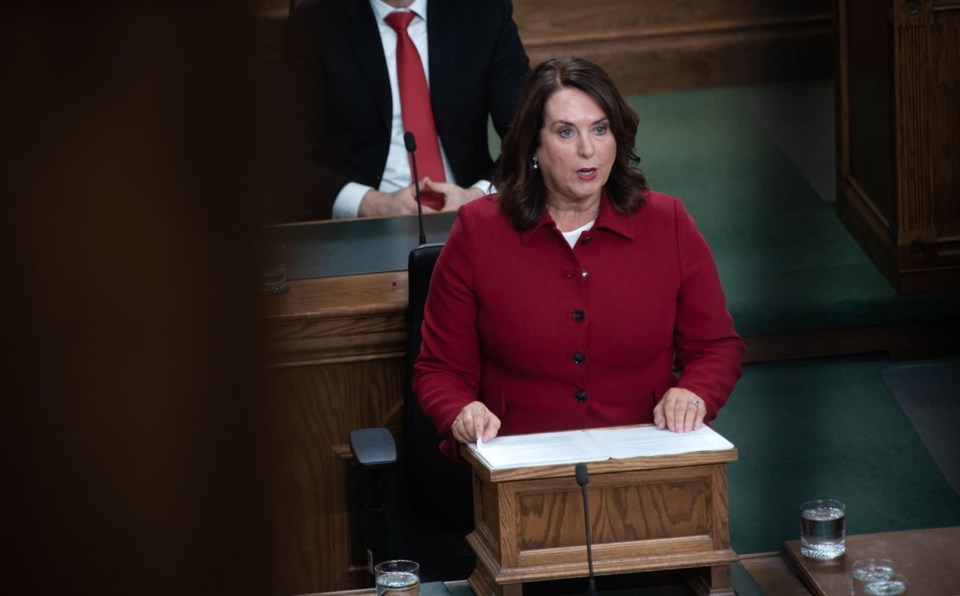ST. JOHN'S, N.L. — The Newfoundland and Labrador government is inching closer to balancing its books, according to a fiscal update on Tuesday.
The province is on track to post a $154-million deficit in the current fiscal year, a slight improvement from the $160-million deficit forecast in the March budget, Finance Minister Siobhan Coady said.
Noting that the deficit hovered at around $2 billion when she took office in 2020, Coady said the province is aiming to balance its books in the 2024-25 fiscal year, which begins in April.
"I'm pleased to say that we are delivering on our goal of stabilizing the province's financial situation," Coady told reporters.
Newfoundland and Labrador has long struggled with debt as its governments have tried to deliver health care and social services across the country's oldest, most rapidly aging and most sparsely populated province.
Though its deficit has shrunk over the past few years, Coady said the province would borrow up to $700 million more this fiscal year than it had anticipated in March, which would bring its net debt to about $17.1 billion, according to documents released with Tuesday's update. In the province of about 536,000 people, that works out to nearly $32,000 per person.
Coady said Tuesday that revenues are up by about $204 million, mostly due to Australian oil company Woodside Energy forfeiting deposits on exploration bids in the province's offshore. Most expenses were in line with those set out in the budget, though the province spent more on debt because of rising interest rates, and on costs related to negotiating new collective agreements with public employees, she said.
Newfoundland and Labrador has recorded a significant increase in population in the past few years, following decades of intermittent out-migration, which first began shortly after the federal government shut down the province's cod fishery in 1992, in an effort to save the dwindling fish stocks.
Coady said the provincial population grew by more than 7,000 people between July 1, 2022, to July 1, 2023 — "the largest annual increase since 1972," she said. However, housing starts are down nearly 35 per cent from last year. Documents show a forecast of 899 starts in 2023, compared with 1,379 in 2022.
Like other provinces and territories, Newfoundland and Labrador has a shortage of affordable housing — a problem several politicians, including Premier Andrew Furey, have described as a "crisis." Homeless people have been camped out in a tent city across from the provincial legislature building since early this month.
There are four oil installations in the province's offshore, and production this year has been lower than expected, largely because of delays in restarting production in the Terra Nova oilfield, Coady said.
Meanwhile, the government has granted four companies the exclusive right to develop wind-powered hydrogen projects on Crown land. Collectively, the finance minister said, these companies are anticipated to spend about $66 billion in construction, operation and decommissioning costs over the course of the projects, which have life spans ranging from 35 to 40 years.
This report by The Canadian Press was first published Oct. 31, 2023.
The Canadian Press



